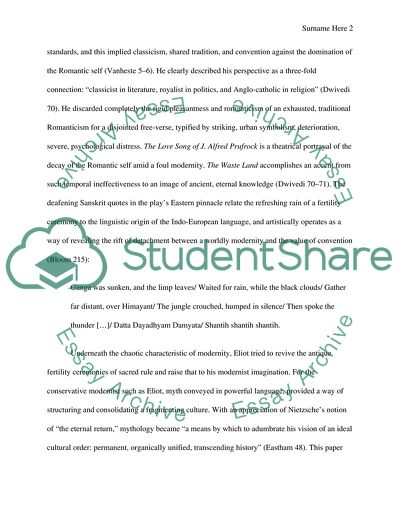Cite this document
(“Classicism vs Modernism in the Plays of T.S Eliot Research Paper”, n.d.)
Classicism vs Modernism in the Plays of T.S Eliot Research Paper. Retrieved from https://studentshare.org/literature/1627211-classicism-vs-modernism-in-the-plays-of-ts-eliot
Classicism vs Modernism in the Plays of T.S Eliot Research Paper. Retrieved from https://studentshare.org/literature/1627211-classicism-vs-modernism-in-the-plays-of-ts-eliot
(Classicism Vs Modernism in the Plays of T.S Eliot Research Paper)
Classicism Vs Modernism in the Plays of T.S Eliot Research Paper. https://studentshare.org/literature/1627211-classicism-vs-modernism-in-the-plays-of-ts-eliot.
Classicism Vs Modernism in the Plays of T.S Eliot Research Paper. https://studentshare.org/literature/1627211-classicism-vs-modernism-in-the-plays-of-ts-eliot.
“Classicism Vs Modernism in the Plays of T.S Eliot Research Paper”, n.d. https://studentshare.org/literature/1627211-classicism-vs-modernism-in-the-plays-of-ts-eliot.


